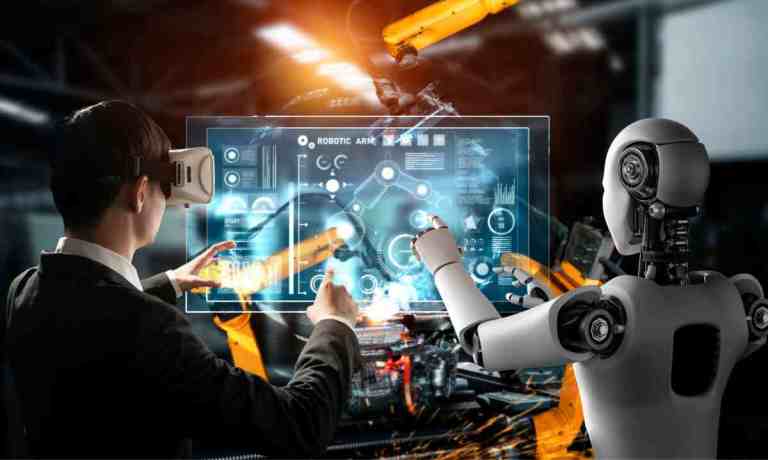After all, to a hammer everything looks like a nail. And to large language models (LLMs), everything might resemble a query.
But generative artificial intelligence (AI) applications that move beyond general-purpose applications to fit-for-purpose solutions provide not just a new, better way to do business; but also hold the potential to change lives while pushing forward the aggregate mass of human knowledge and capability.
This, as research published in the journal Nature on Wednesday (Aug. 23) showed how scientists were able to program an AI algorithm to decode brain activity into audio waveforms, producing vocalized speech via a LLM at a conversational level.
More than just a pure research experiment, the study was able to give a woman paralyzed from a stroke her voice back. It represents a truly life-changing innovation.
The paper’s findings “introduce a multimodal speech-neuroprosthetic approach that has substantial promise to restore full, embodied communication to people living with severe paralysis,” per the researchers.
Advertisement: Scroll to Continue
The bleeding edge does have its benefits.
Read more: It’s 23-Year-Olds vs AI in the Latest Business Battle Royale
Developing Specific White Space Use Cases
From hospitals to warehouse automation, the accounting office, and more, AI applications that move beyond general-purpose applications to fit-for-purpose solutions offer enterprises and even entire industries a compelling change-the-game potential.
That’s because the verticalization of AI capabilities can provide organizations with specific, and powerful, use cases that leverage the most future-fit and valuable applications of the innovative new technology.
Already, industry-specific intelligent business applications are accelerating tasks with incredible speed and accuracy.
As just one example, leading players within the telecom sector are tapping generative AI to develop a multilingual LLM solution that overcomes language barriers across various geographies in order to provide seamless communication between customers and providers, breaking down linguistic barriers and expanding the reach of telecom services to diverse markets.
And it isn’t just within the telecom industry where LLMs are driving real business impact.
Olivier Thierry, chief revenue officer at HungerRush, told PYMNTS last month that voice AI is especially useful in pizza restaurants, where customers disproportionately call in their orders.
“Phone ordering is a huge component of the business, … [leveraging a robotic AI communication interface] is a very sweet way to reduce labor utilization and to provide a superior guest experience,” Thierry said.
Customer-facing chatbots trained on internal company data to provide highly specific and dynamic responses to customer queries and questions represent one of the more immediate easy-win applications of AI technology for businesses looking to capture scalable efficiencies while simultaneously delighting their customers.
Read also: Humanoid Robots Take Heavy Lift Out of Warehouse Automation
AI Represents a Capability Phase Shift, not a Silver Bullet
The AI landscape is becoming increasingly crowded, meaning that it will fall on firms themselves to decide which innovative offerings and foundational LLM platforms provide the most fertile ground for developing their own business purposes.
PYMNTS research in the 2023 report, “Understanding the Future of Generative Al,” a collaboration with AI-ID, revealed that LLMs — the neural networks behind platforms like OpenAI’s ChatGPT, Anthropic’s Claude, and Google’s LaMDA — could impact 40% of all working hours.
The generative AI market is expected to grow to $1.3 trillion by 2032, compared to $40 billion in 2022.
“We are in that economic cycle where every cost you can beat out of the process is necessary right now … how to save money and how to eliminate those manual steps in the processes is top of mind,” Ingo Money CEO Drew Edwards told PYMNTS.
The majority of LLM platforms in the market today display a sophisticated capability for language processing and conversational response generation. Particularly within a commercial setting, leveraging AI and NLP (natural language processing) solutions built on LLMs trained on hundreds of billions of words can help to remove the manual lift and sunk time cost from daily tasks like replying to emails and coordinating price-matching over the phone or via text.
“There’s a value in simplifying an existing relationship by making it smoother, whether that’s across contracts, communication or payments,” Kaustubh Pandya, partner at Brick & Mortar Ventures told PYMNTS in July.
While huge leaps in medicine and clinical care represent one side of the generative AI coin, small, accretive, value-add simplifications of legacy complexities and the scalable streamlining of historical fragmentations are where savvy enterprises should focus their AI energies, at least for now.

